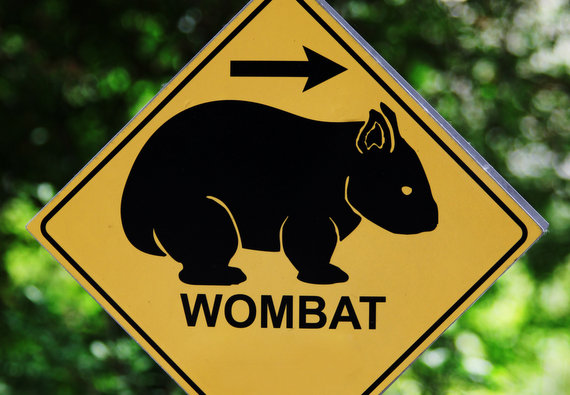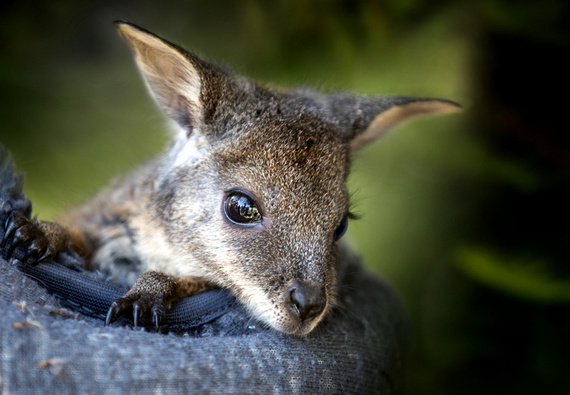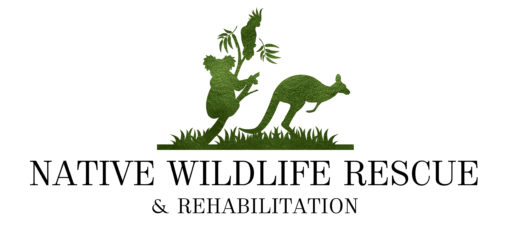
A Chance For Survival
Native Wildlife Rescue operates as a non-profit organisation in the Southern Highlands and is a regional member of Wildlife Rescue South Coast Inc (WRSC). The organisation is licensed by the Office of Environment and Heritage to rescue and rehabilitate injured, sick and orphaned wildlife.
Most of the 1500 calls we receive annually are often to assist injured wildlife involved in vehicle collisions throughout the Southern Highlands. We also coordinate emergency rescues of nature in the bush and on private property — mammals, reptiles and birds with life-threatening injuries caused by discarded wiring, plastic and other toxic rubbish.
Though most of the accidents are unpreventable, we urge the Southern Highlands’ community and visiting members of the public to take extra care on freeways, backroads and along bush trails, and in the gardens and groundcovers where wildlife habitats co-exist. If you see anyone littering or dumping rubbish, please report the offenders [including the make of their vehicle, car registration and location] to the Police on 02 48697899.

Your Safety Comes First
Here are some essential tips to make your road journey and our wildlife safer.
|1| If you’re driving at night, reduce your speed by 10-20 per cent on roads known for wildlife incursions, including Old South Road, Illawarra Highway, Medway to Berrima and the stretch of road from Sutton Forest to Bundanoon. |2| If you encounter any wildlife [or domestic animal] on the highway, do not swerve violently to avoid hitting it, as you could lose control of your vehicle and cause injury to yourself, your passengers and any other oncoming or trailing vehicle. |3| If the animal you hit is dangerously positioned on the road and could impact oncoming traffic, please do not attempt to drag it to the side if it places your life or another driver at risk. Contact our 24/7 hotline or the police. |4| If possible, tie a Coles or Woolworths shopping bag to the nearest mile marker or an unmistakable landmark. This will allow a wildlife rescuer to locate the injured or sick wildlife. |5| If possible, check to see if the deceased wildlife is a male or female. Often a young or newborn joey will be found in its mother’s pouch.

Checking for Injuries & Joeys
If you collide with a marsupial [e.g., wombat, koala, possum, kangaroo or wallaby], we urge you to exercise precaution before approaching the animal. |1| Never become complacent if you assume the animal is dead. Distressed macropods [roos and wallabies] can cause great harm even if they’re injured or in shock. The most significant risk is receiving a severe kick to the face or chest. |2| Take note if the injured wildlife appears to be agitated by your presence. If you have a towel, place it over its head, thus calming it down. |3| When checking the pouch of a dead marsupial, examine the entire area, including its nipples [remember that wombats and koalas have pouches that open backwards]. |4| If you discover a joey, please be careful not to get its head or tail caught when removing it from the pouch. Also, never forcefully manoeuvre a limb that’s caught in the pouch, especially with tiny macropod joeys, as often their mouths are fused to their mother’s teat. |5| Contact us or, if possible, transport the deceased mother and joey to the nearest vet or to one of our carers. Our 24/7 will assist you with the required steps [see below].
What To Do In An Emergency
|1| If you have hit an animal, try to pull over to see if its injuries are fatal but only do this if you have not placed yourself, your passengers or other oncoming drivers at risk. Then turn on your hazard lights and check your mirrors to ensure it’s safe to step out.
|2| Make sure you haven’t stopped in a blind spot, as you will become a hazard to other drivers, including trucks and large vehicles.
|3| Make sure that your passengers [especially all children] remain in the car.
|4| Before you search any pouches for joeys, it is vital that you first ascertain any potential risks. Always view any kangaroo or wallaby from a safe distance to ensure that the animal is deceased, and then approach cautiously if the animal is unconscious or in shock.
[5] If the animal shows signs of recovery, take note of its mannerisms and maintain your distance. This may include the shaking of its head or twitching of its ears. If this happens, it’s crucial that you slowly retreat to the safety of your vehicle and contact us.
[6] If the injured wildlife cannot get up [especially kangaroos and wallabies], its injuries will likely be severe and beyond treatment. Therefore, report any injured wildlife without delay.
[7] Do not attempt to euthanise the injured animal. Wildlife rescue officers and the police are trained to humanely euthanise any sick or injured wildlife.
[8] If you cannot remain at the collision site, please leave a distinct marker tied to a tree, fence or post and report the incident from the nearest mile marker or signpost.
[9] If you frequently travel along country roads, have a GREEN Woolworths or Coles bag handy to use as a marker on a tree or fence post. It’s also a good idea to have two pairs of latex gloves [for you and for another person to assist where possible], a recycled bag for any rubbish, a bottle of water and soap [to scrub your hands after handling the animal] and an old blanket. If you also have an old cardboard box, this will make an excellent plank in your vehicle.
[10] If you live near one of the nature reserves in the Southern Highlands and have seen a mature duck and duckling lying on the road, other ducklings will likely be hiding close by. Please search for them in the tall grass or nearby reeds.
[11] Never pick up injured snakes and flying foxes. Contact us, and we will have a trained snake handler or wildlife rescuer assist you. See our page on venomous snakes.
We appreciate your support. Woody and Kerstin.
